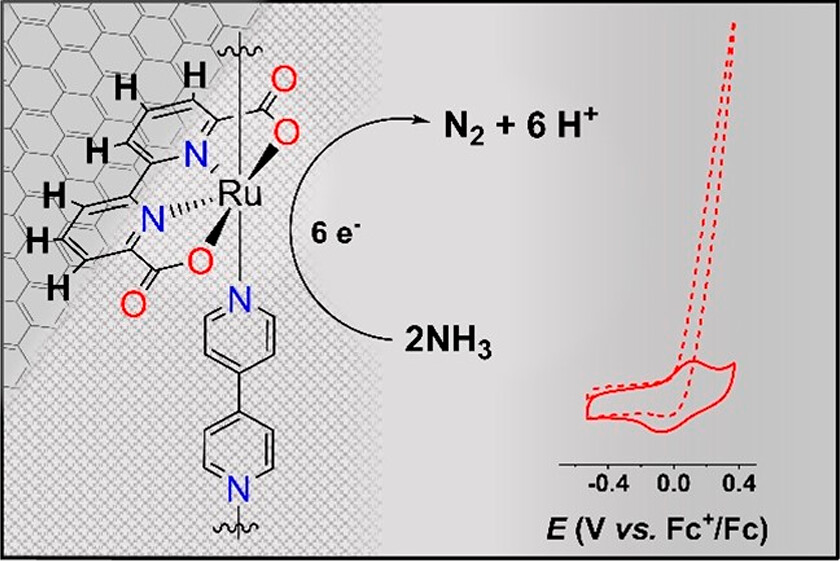Heterogeneous Electrochemical Ammonia Oxidation with a Ru-bda Oligomer Anchored on Graphitic Electrodes via CH−π Interactions
Molecular catalysts can promote ammonia oxidation, providing mechanistic insights into the electrochemical N2 cycle for a carbon-free fuel economy. We report the ammonia oxidation activity of carbon anodes functionalized with the oligomer {[RuII(bda-κ-N2O2)(4,4′-bpy)]10(4,4′-bpy)}, Rubda-10, where bda is [2,2′-bipyridine]-6,6′-dicarboxylate and 4,4′-bpy is 4,4′-bipyridine. Electrocatalytic studies in propylene carbonate demonstrate that the Ru-based hybrid anode used in a 3-electrode configuration transforms NH3 to N2 and H2 in a 1:3 ratio with near-unity faradaic efficiency at an applied potential of 0.1 V vs Fc+/0, reaching turnover numbers of 7500. X-ray absorption spectroscopic analysis after bulk electrolysis confirms the molecular integrity of the catalyst. Based on computational studies together with electrochemical evidence, ammonia nucleophilic attack is proposed as the primary pathway that leads to critical N–N bond formation.

Beiler, A. M.; Denisiuk, A.; Holub, J.; Sánchez-Baygual, F.; Gil-Sepulcre, M.; Ertem, M. Z.; Moonshiram, D; Piccioni, A.; Llobet, A.
ACS Energy Lett. 2023, 8 (1), 172-178
DOI:
10.1021/acsenergylett.2c02483

Let's create a brighter future
Join our team to work with renowned researchers, tackle groundbreaking
projects and contribute to meaningful scientific advancements




















